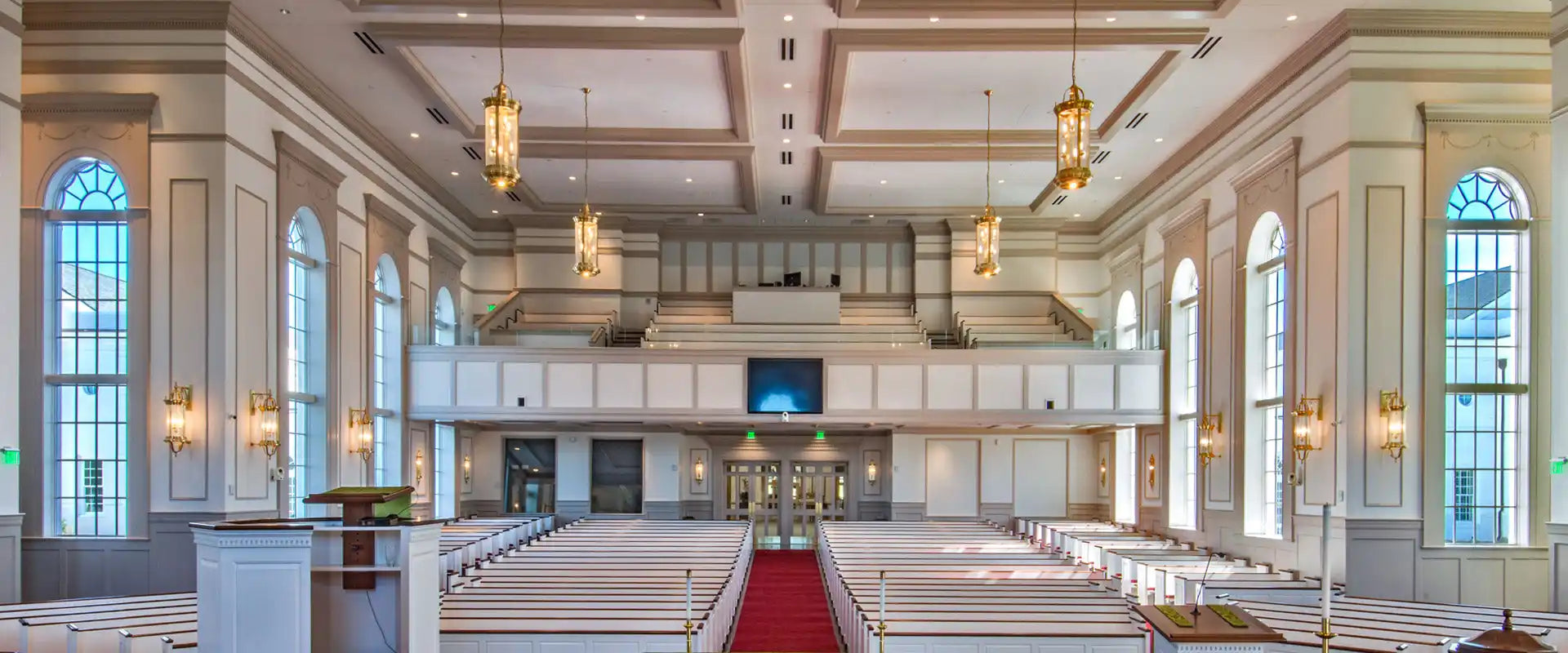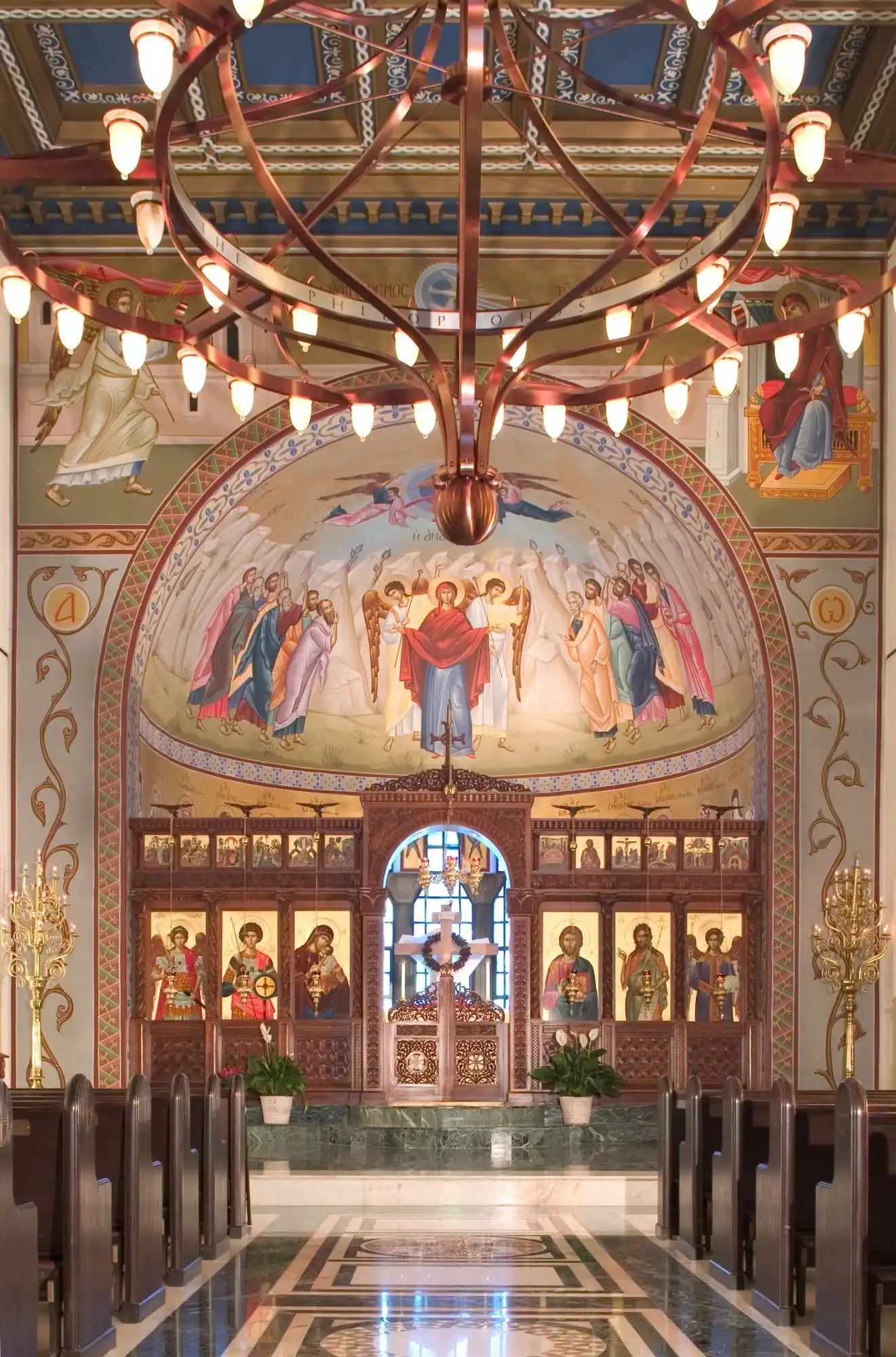selected
projects

First Presbyterian Church- Myrtle Beach

Saint George Greek Orthodox Church
Ecclesiastical
Ecclesiastical lighting design plays a crucial role in enhancing the spiritual and aesthetic experience within places of worship. The selection of lighting fixtures, including chandeliers and pendant lights, is essential for creating an atmosphere that reflects the sacred nature of the space. This document aims to provide an overview of the principles and considerations involved in ecclesiastical lighting design.
One of the primary objectives of ecclesiastical lighting is to support the liturgical functions of the space. This includes illuminating areas for congregational seating, altars, and other focal points within the sanctuary. According to the Illuminating Engineering Society (IES), appropriate lighting levels for worship spaces typically range from 30 to 50 foot-candles, depending on the specific activities taking place. This ensures that both the clergy and congregation can engage in worship without visual strain.
In addition to functional requirements, the aesthetic qualities of lighting fixtures must also be considered. The use of chandeliers and pendant lights can significantly enhance the architectural features of a church or cathedral. For instance, a well-designed chandelier can draw the eye upward, emphasizing the height and grandeur of vaulted ceilings. Studies have shown that the visual impact of lighting can influence the emotional response of individuals, making it essential to select fixtures that resonate with the overall design ethos of the space.
Moreover, the choice of materials and finishes for lighting fixtures is critical in ecclesiastical settings. Fixtures made from high-quality materials such as brass, crystal, or stained glass can contribute to the overall elegance and reverence of the environment. Research indicates that the use of natural materials can foster a sense of connection to the divine, enhancing the spiritual experience for worshippers.
Lighting design in ecclesiastical settings also involves the consideration of energy efficiency and sustainability. The integration of LED technology has become increasingly popular, as it offers significant energy savings and longer lifespans compared to traditional incandescent bulbs. According to the U.S. Department of Energy, LED lighting can reduce energy consumption by up to 75%, making it an environmentally responsible choice for places of worship.

